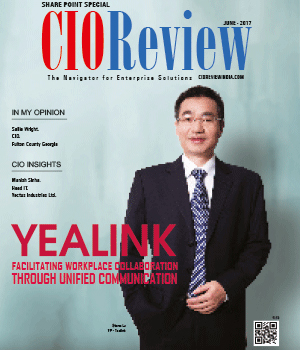
Multi-IMSI Ecosystem: A Revolution in International Roaming
Nigam Shah, CIO & SVP - Cloud Services, Roamware Inc. | Friday, 02 September 2016, 10:28 IST
 Imagine a scenario where you want to travel overseas and you buy a SIM card for travel or a local SIM card upon landing. You have to endure complicated dialing procedures and have little or no integration with applications on your phone like your address book. You cannot use your home number and people you call see a different number flashing. While these are irritants in your experience as a subscriber, you opt for them because you want to save communication costs as a traveler. The question is – why are operators not making this simpler for their global travelers – a segment that crossed the one billion mark in 2012.
Imagine a scenario where you want to travel overseas and you buy a SIM card for travel or a local SIM card upon landing. You have to endure complicated dialing procedures and have little or no integration with applications on your phone like your address book. You cannot use your home number and people you call see a different number flashing. While these are irritants in your experience as a subscriber, you opt for them because you want to save communication costs as a traveler. The question is – why are operators not making this simpler for their global travelers – a segment that crossed the one billion mark in 2012.
The challenges for MNOs and MVNOs are two fold – operators are finding it difficult to offer attractive roaming rates and substitute offerings such as local SIM cards, travel SIM cards, over the top (OTT) applications and local Wi-Fi, are aggressively marketing their benefits to subscribers.
Mobile Operators need a solution which enables them to offer attractive roaming rates to subscribers on their home number, so that they can retain their loyalty and profitably serve them while they roam. In order to make this happen, an operator needs to build a global cloud ecosystem of fellow operators that can enable his subscriber to get attractive rates in the countries of travel on his home number. While it is time consuming for each operator to build such an ecosystem, in the true spirit of Cloud-based solutions, all they need to do now is plug and play and let the cloud ecosystem do the work in the background.
Cloud Computing has its roots in Enterprise IT and aims to leverage a network of computing devices spread in order to perform the tasks that were hitherto done owned IT servers. In the telecom world, there is the concept of the Carrier Cloud, which provides a cloud computing infrastructure for mobile operators and telecom carriers. While an Enterprise IT cloud would take care of areas such as storage, computation and computer networking, the Carrier Cloud would provision operator services using the cloud. Some examples of services that can be provided over the cloud are :
Customer Experience Management – real time network and subscriber experience testing and reporting so that subscribers receive pre-tested and validated services
Call Routing – low cost global transport of calls so that operator can provide lower international call rates to subscribers
Security – protect operator networks from fraud attacks such as SIM Box Fraud and IRSF fraud so that subscribers don’t feel the economic brunt of these attacks
Roaming – services such as roaming traffic redirection, roaming hubs, automatic dialing number correction while roaming, subscriber messaging are offered on the cloud
Number Services – enables operators to assign multiple numbers to a single subscriber and dynamically provision a temporary local number to a subscriber
Policy Control – allows operators to define, rollout and monitor policies related to data usage, tariffs and volume of voice & data consumption and give subscribers the ability to control their own usage without suffering bill shock at the end of the bill cycle
A Multi-IMSI ecosystem can be a cloud-based international subscriber identity ecosystem that helps Mobile Operators and MVNOs offer attractive roaming rates to international travelers on their home numbers. Such an ecosystem can connect a network of Hub Operators around the world with Client Operators to facilitate roaming by subscribers of Client Operators on the networks supported by the Hub operators.
Clients can benefit from the power of one where a single agreement will give access to entire ecosystem. Client operators get their roaming outbound regions without establishing roaming relationships at attractive rates. They get special competitive voice, SMS & data tariff for regions that their subscribers travel to. They can offer subscribers a seamless and cost effective roaming experience on their home number. Hubs can improve roaming traffic for regions where they have invested in coverage through IOT agreements. Hub operators can improve wholesale revenue from a global network of Client operators and increase outbound roaming for underutilized regions. Now re-imagine a scenario where you want to travel overseas. You don’t have to buy a SIM card for travel or a local SIM card upon landing. You can use your home number and people you call will see your home number flashing. When you land in a foreign country, you will automatically be switched over to a local identity on the same SIM card and give you a cost effective roaming experience.
All this happens with the power of the Cloud.
CIO Viewpoint
Leveraging SharePoint for Corporates
By Sanjeev Jain, CIO, Integreon
Internet of Things: the next Big Bang of...
By Sanjay Pawar, Head IT, India Advantage Security Limited
Information Technology and its Current Trends
By Ravindra Deshpande, Head IT, Universal Sompo General Insurance Co. Ltd
CXO Insights
How the Enterprise Division is Contributing to...
By Vijay Wadhawan, Associate Director, Panasonic India
Leverage SharePoint to Foster the Culture of...
By Dave Long, Director in the Velocity Solutions Practice, Tribridge
Dealing with the Adoption Challenges of...







